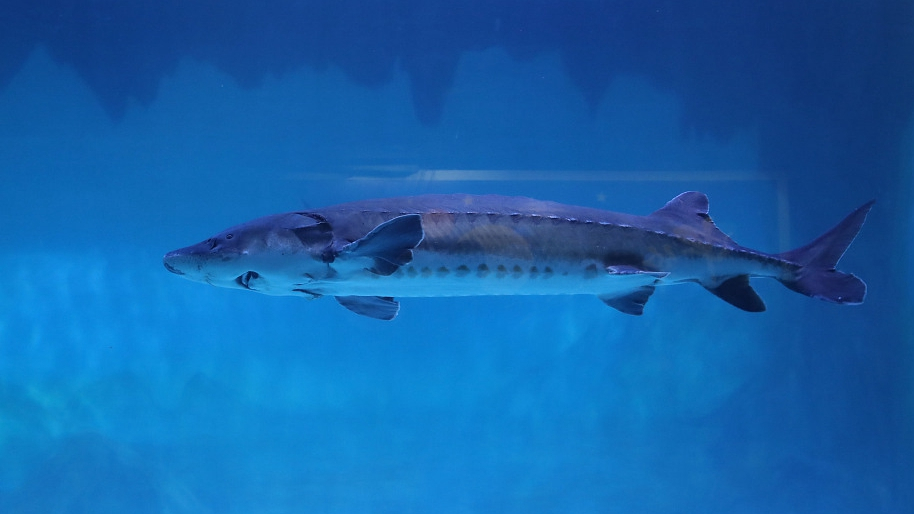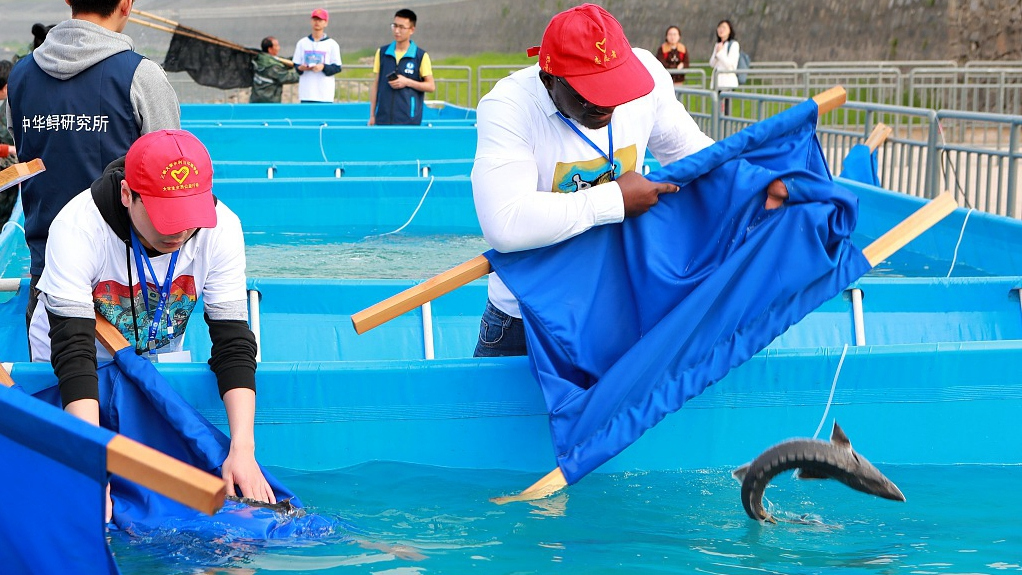
Animal
12:25, 13-May-2019
Saving the Chinese sturgeon from extinction
By Zhang Hao

Seven hundred Chinese sturgeons were released in the Yangtze River in April, making it the 61st sturgeon release in China since 1984.
Up to now, over five million Chinese sturgeons have been released, but the question still remains: can the species come back
from the verge of extinction?
Sadly, the answer is far from satisfactory.

Volunteers are preparing young Chinese sturgeons before their release into the Yangtze River in Hubei Province, China. /VCG Photo
Volunteers are preparing young Chinese sturgeons before their release into the Yangtze River in Hubei Province, China. /VCG Photo
The combination of overfishing, water pollution and increasing human activity in shared waters poses far more danger to the recovery of the species than all the efforts done to increase its number. In other words, the more fish we try to propagate, the more will die if the root problems are not under control.
However, attempts must not stop to enhance the chances of their prospective prosperity. In order to help them survive in the wild, people have, for the very first time, conducted a series of training. For two months, the selected healthy and fit fishes were fed with natural food such as loaches in flowing waters.
Different tracking devices were attached to the released fishes to follow their activity. For example, sonar chips were implanted in the fishes' belly area, and whenever they are near the receiver, a series of information will be recorded automatically. This enables scientists to deduce their migration route.
Given no evident traits of Chinese sturgeon left to help identify the gender, unknown reasons have caused unexpected sex imbalances, with female fish outnumbering males. Thanks to the genetic diagnosis technology, scientists are given more clues to alter the gender ratio in the following release to narrow the gender gap in the wild.
All in all, what determines the fate of the Chinese sturgeon will always come back to the clean water and fewer threats created by us. Only by then, we are safe to say they are saved.

SITEMAP
Copyright © 2018 CGTN. Beijing ICP prepared NO.16065310-3
Copyright © 2018 CGTN. Beijing ICP prepared NO.16065310-3